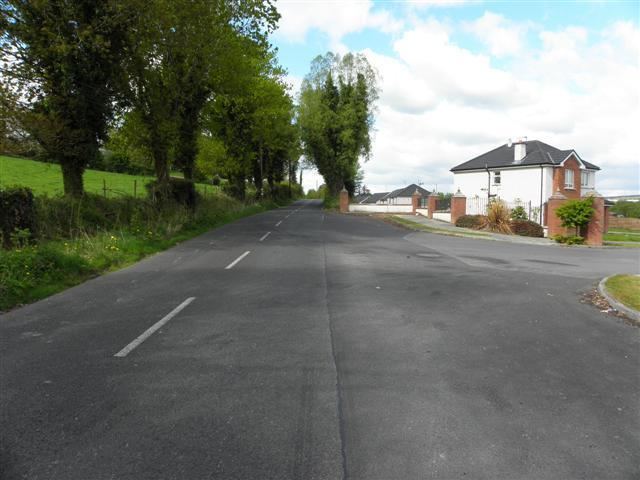Province Ulster | ||
 | ||
Corranierna is a townland in the Parish of Tomregan, Barony of Tullyhaw, County Cavan, Ireland.
Contents
Map of Corranierna, Mountain View, Co. Cavan, Ireland
Etymology
The townland name is an anglicisation of the Gaelic placename “Cor an Iarna” which means ‘The Hill of the Skein (of thread)’, which derived its name from the weavers who lived there. In the Dúchas Schools' Collection at http://www.duchas.ie/en/cbes/5083770/5039657 there is an account of a flax mill in Corranierna. On the 1609 Ulster Plantation map it is named ‘Claghan’ (Gaelic ‘Clochán’ meaning a small beehive-shaped stone house), but by the Down Survey of 1655 it was merged into Mullaghduff townland where the combined townland was called ‘Mullaghduffe alias Cloghane alias Cornerin’. By 1687 Corranierna again existed as a separate townland.
Geography
It is bounded on the north & west by Annagh townland, on the east by Killywilly townland and on the south by Mullaghduff townland. Its chief geographical features are Annagh Lough, Killywilly Lough, two chalybeate wells and some drumlin hills reaching an altitude of 234 feet (71 m) above sea-level.
The townland is traversed by the Yellow Road, Killywilly Lane, some minor lanes and the disused Cavan and Leitrim Railway.
Corranierna covers an area of 180 statute acres, including 26 acres (110,000 m2) of water.
History
It formed part of the Manor of Calva which was granted to Walter Talbot in 1610 as part of the Plantation of Ulster.
The Tithe Applotment Books for 1827 list the following tithepayers in the townland-Garvey, Fitzpatrick, Reilly, McCormick, Grimes.
The 1841 Census of Ireland gives a population of 160 in Corranierna, of which 79 were males and 81 were females, with 29 houses.
The 1851 Census of Ireland gives a population of 113, a decrease of 47 on the 1841 figure, due to the intervening Irish Famine of 1845–47, of which 58 were males and 55 were females, with 23 houses.
Griffith's Valuation of 1857 lists the landlord of the townland as the Roe Estate & the tenants as Fitzpatrick, Roe, Reilly, Sheridan, Lomus, Cochrane, McGarvey, Smith, Kennedy, McCormack, Cassidy and Graham.
In the 1901 census of Ireland, there are sixteen families listed in the townland.
In the 1911 census of Ireland, there are seventeen families listed in the townland.
Antiquities
The only historic site in the townland is the disused Cavan and Leitrim Railway.
